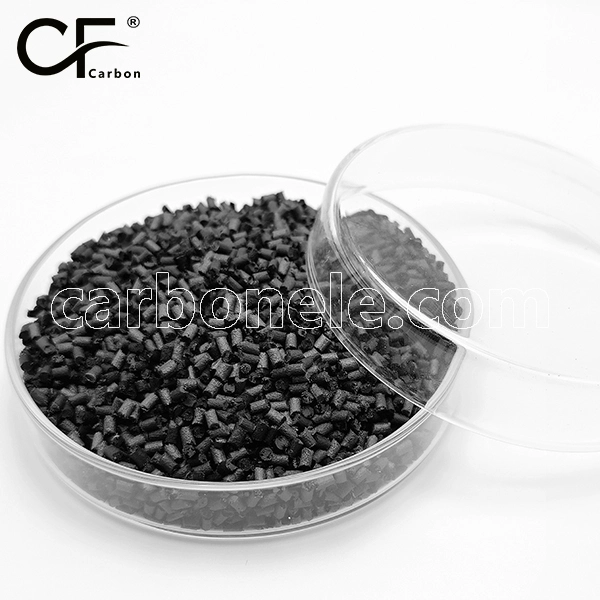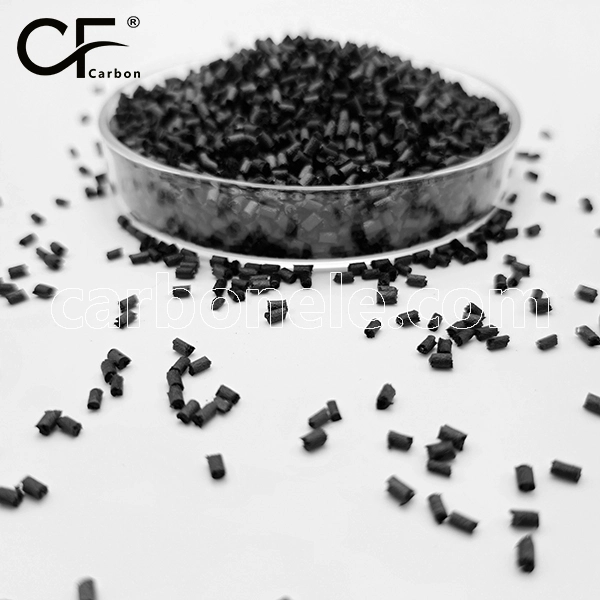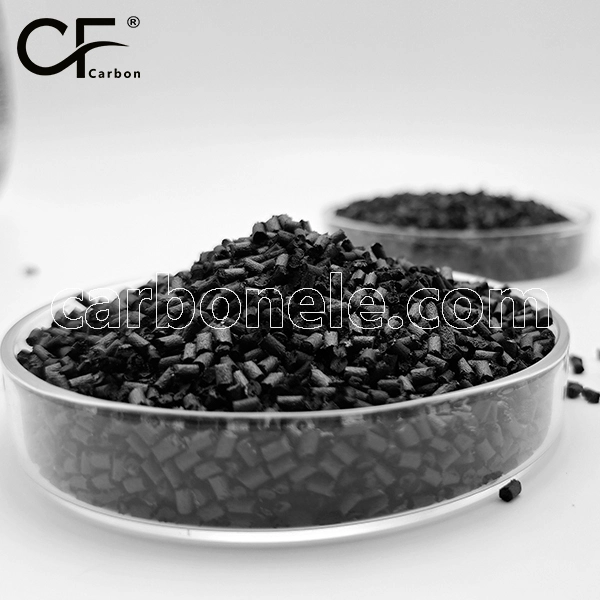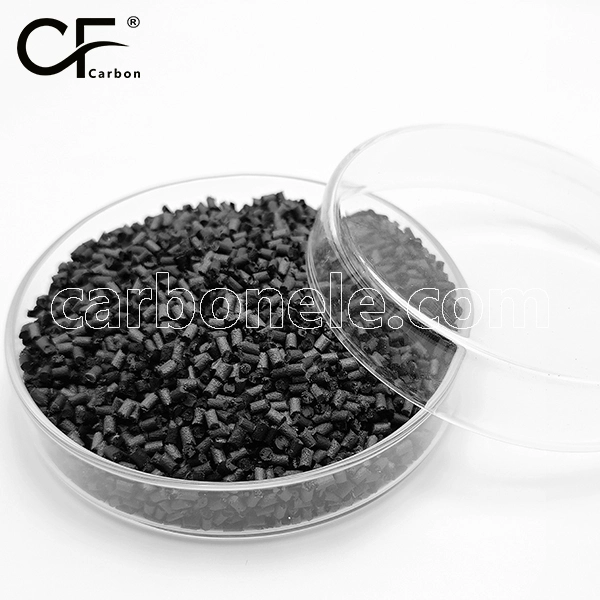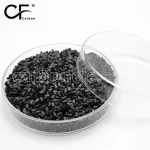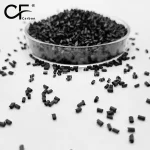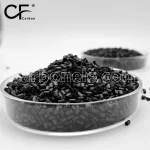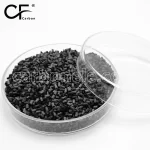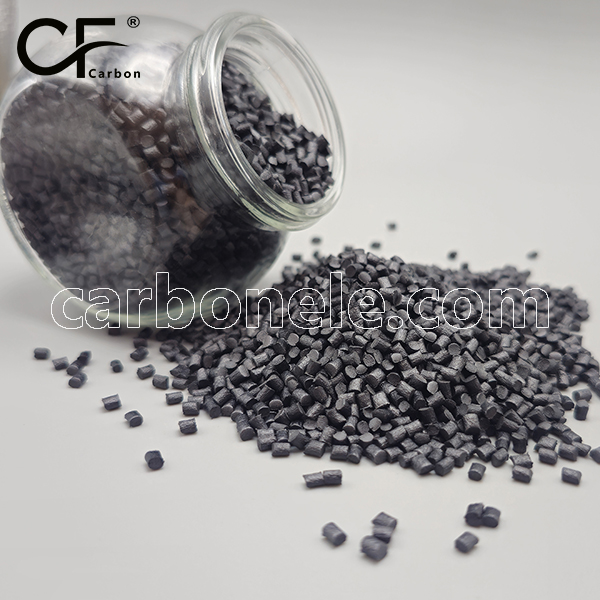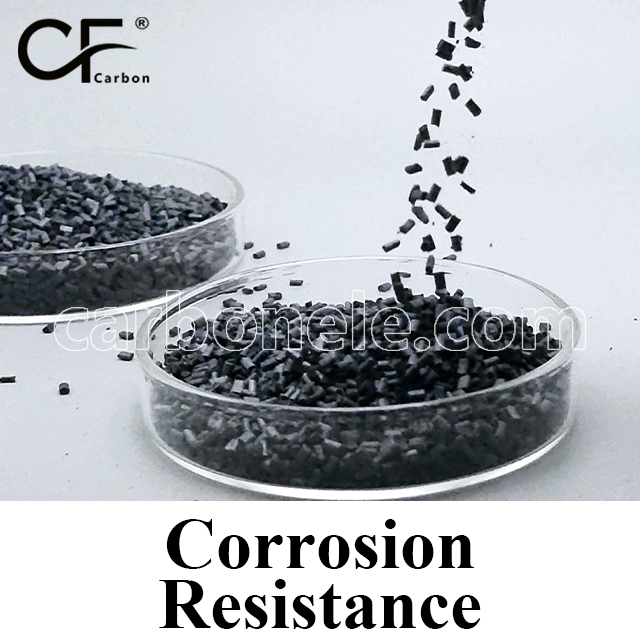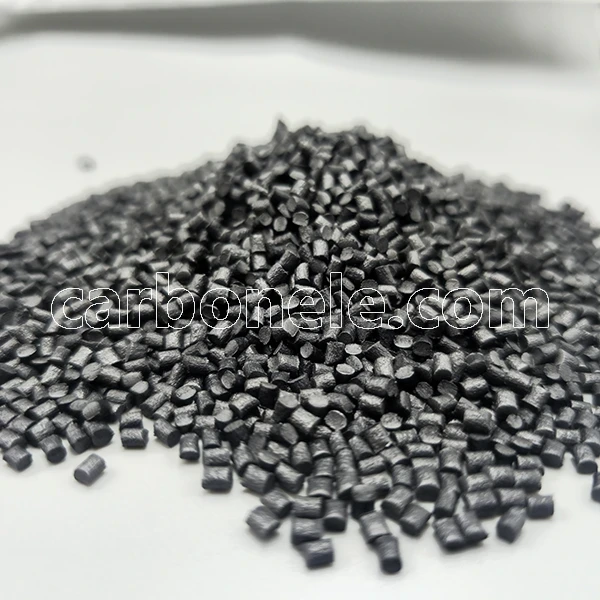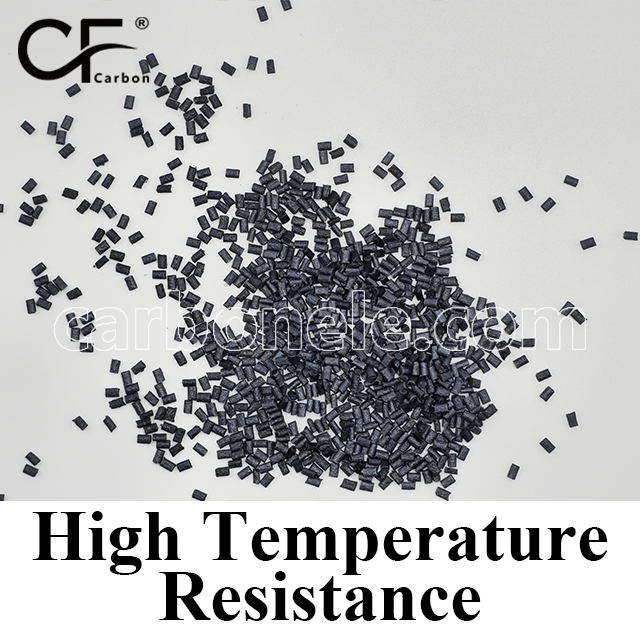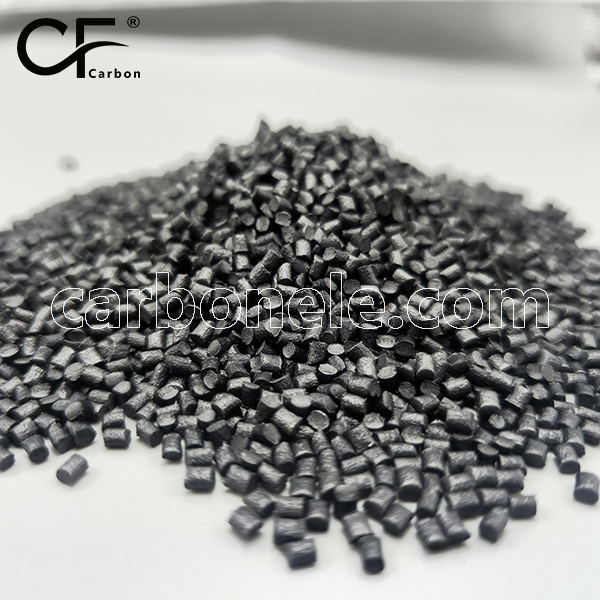
Granular Conductive PEEK CF30 Engineering Plastic Raw Materials
- Manufacturer: Carbon New Material
- OEM/ODM: Acceptable
- Color: Black
- Free Samples: ≤25kgs
- MOQ: 100kgs
- Port: Xiamen
- Model: PEEK-CF-BCA2
- Fillers: Chopped carbon fiber
Conductive PEEK CF30 Engineering Plastic Raw Materials:
1. High Conductivity: Enables electrical conduction for specific applications.
2. High Strength: Offers excellent mechanical strength for load-bearing tasks.
3. High Rigidity: Resists deformation under various mechanical stresses.
4. Good Heat Resistance: Maintains properties in high-temperature environments.
5. Wear Resistance: Withstands friction and wear in long-term usage.
6. Chemical Stability: Shows resistance to a wide range of chemicals.
7. Easy Processing: Can be processed into different shapes with relative ease.
What about the electrical conductivity of Conductive PEEK CF30 (30% carbon fiber reinforced polyetheretherketone)?
Carbon fiber has certain electrical conductivity. When 30% carbon fiber is added to polyetheretherketone (PEEK), these carbon fibers form an electrical conduction network in the PEEK matrix, endowing the originally insulating PEEK with electrical conductivity. Its specific electrical conductivity is affected by various factors, such as the dispersion, length, and orientation of the carbon fibers.
Generally speaking, compared with pure PEEK, the volume resistivity of Conductive PEEK CF30 is significantly reduced, usually reaching the range of 10² – 10⁶ Ω·cm (the specific value may vary due to different production processes and testing conditions), thus meeting the requirements of some application scenarios where the electrical conductivity of the material is needed, such as shielding components of electronic devices and anti-static products, which can effectively prevent the accumulation of static electricity and electromagnetic interference.
CF20 PEEK & GF20 PEEK
The table presents a comparison of the properties between CF20 PEEK and GF20 PEEK. In terms of mechanical properties, CF20 PEEK outperforms GF20 PEEK in tensile and flexural strength, with values ranging from 180 - 240 MPa and 240 - 350 MPa respectively, compared to 120 - 180 MPa and 180 - 280 MPa for GF20 PEEK. Also, CF20 PEEK has higher tensile and flexural moduli. However, GF20 PEEK shows better impact strength, from 8 - 15 kJ/m² against 6 - 12 kJ/m² of CF20 PEEK. Regarding thermal properties, CF20 PEEK has a higher heat deflection temperature (around 310℃) and a lower coefficient of linear expansion. GF20 PEEK has a density range of 1.40 - 1.50 g/cm³, slightly lower than CF20 PEEK's 1.45 - 1.56 g/cm³. These differences should be considered when choosing between the two materials for specific applications.
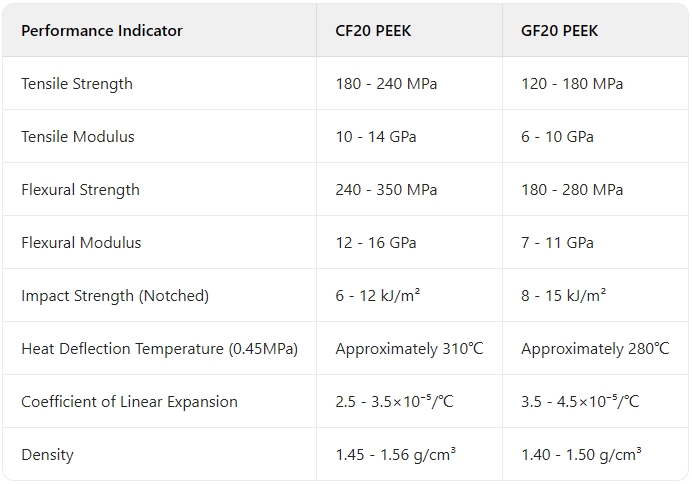
Get to Know Carbon Fibers
The table presents key performance data of carbon fiber grades. T300, with a tensile strength of 3530 MPa and a tensile modulus of 230 GPa, has a relatively low tensile elongation at break of 1.5% and a body density of 1.76 g/cm³. As the grade increases, for example, T700S shows an enhanced tensile strength of 4900 MPa compared to T300, while maintaining the same tensile modulus but with a higher elongation at break of 2.1%. T800S and T1000G both have a tensile modulus of 294 GPa, and their tensile strengths are 5880 MPa and 6370 MPa respectively. T1100G stands out with the highest tensile strength of 7000 MPa and a tensile modulus of 324 GPa. Generally, with the increase in product grade, the tensile strength and modulus tend to rise, while the density remains relatively stable around 1.8 g/cm³.
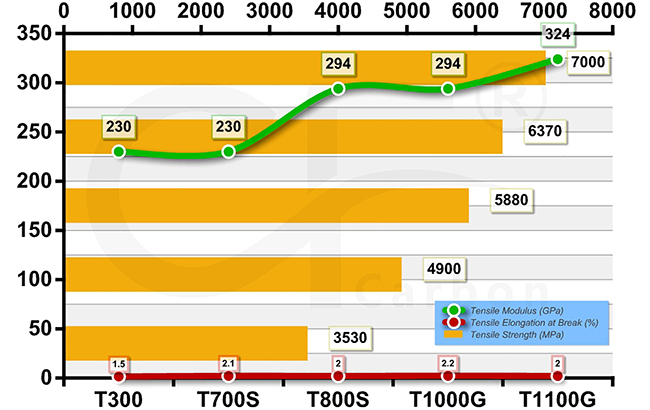
Why Choose Us?
Carbon (Xiamen) New Material Co., Ltd. stands out for its expertise in CFRTPs. We possess cutting-edge tech, ensuring top-notch product quality. Our dedicated team offers personalized service and strict quality checks. Choose us for reliable materials and a seamless cooperation experience.

How to Buy?
If you want to obtain information such as product specifications, performance, and price, choose a suitable product according to your own needs. Meanwhile, you can ask the manufacturer to provide samples for testing to ensure that the material meets your usage requirements. If you are interested in purchasing this composite material, please contact the manufacturer Carbon (Xiamen) New Material directly.
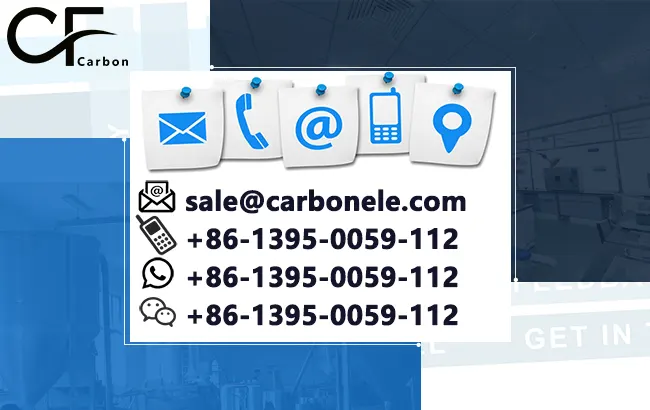
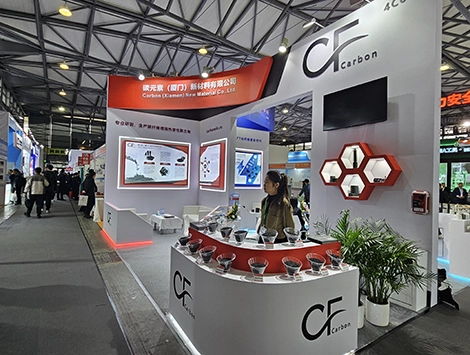

Frequently Asked Questions
Carbon (Xiamen) New Material Co., Ltd. aims to provide buyers with "one-stop" worry-free high-quality services. Here you can find all information about carbon fiber engineering plastics. If you still have questions, please send us an email for consultation!
-
How can I contact the manufacturer of a product that interests me?
When you find a product you are interested in, you can contact the manufacturer directly by sending an email and we will get back to you as soon as possible.
-
How do I find the products that interest me?
All you need to do is enter the keyword, product name in the search window and press the Enter key on your keyboard. Your search results page will then be displayed. You can also search within the product category pages on the home page. Each category is divided into subcategories, allowing you to refine your search and find products that interest you.
-
Where will I find a buying guide?
Please contact our after-sales service directly and we will provide you with a comprehensive operating guide.
-
What are CF Reinforced Thermoplastic Composites?
CF Reinforced Thermoplastic Composites are materials where carbon fibers are incorporated into a thermoplastic matrix. They combine the strength and stiffness of carbon fibers with the processability and recyclability of thermoplastics. For instance, they are used in automotive parts like bumper beams.
-
What are the benefits of CF Reinforced Thermoplastic Composites over traditional composites?
The key benefits include faster production cycles, easier recyclability, and better impact resistance. They also offer design flexibility. An example is in the manufacturing of consumer electronics casings where complex shapes can be achieved more easily.
-
How are CF Reinforced Thermoplastic Composites processed?
Common processing methods include injection molding, extrusion, and compression molding. Injection molding is widely used for mass production. For example, in the production of small components for the medical industry.
-
What industries use CF Reinforced Thermoplastic Composites?
They are utilized in aerospace, automotive, medical, and sports equipment industries. In aerospace, they can be found in interior components. In the medical field, they might be used in prosthetics.
-
How does the carbon fiber content affect the properties of the composites?
Higher carbon fiber content generally leads to increased strength and stiffness but may reduce ductility. A moderate content is often balanced for specific applications. For example, a higher content might be preferred in structural parts of a race car.
-
What are the challenges in using CF Reinforced Thermoplastic Composites?
Challenges include higher material costs, complex processing equipment requirements, and ensuring uniform fiber dispersion. Issues with adhesion between the fibers and the matrix can also arise. An example is in achieving consistent quality in large-scale production.








